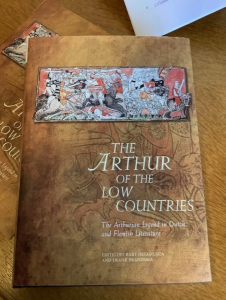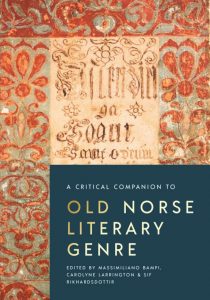Apart from participating in the Emotions and the Self project, I am also preparing a digital edition of a section of the Middle Dutch Lancelot compilation. Sometimes these two activities intersect. The episode that I am now editing is about Bohort’s experiences in the so-called Palace of Adventures in the Grail Castle. When Bohort visited the Grail Castle for the first time, he was spared a night in this dangerous place because of his pious attitude towards the Grail. Previously, Gawain, who had more eyes for the Grail maiden than for the Grail, was forced to spend the night in the Castle, suffered all kinds of abuse and disgrace, and was shamefully escorted out on a cart. Bohort has been admonished by a damsel some time ago that he really should have visited the palace and now is quite eager to experience its adventures. He finds a wonderful bed and is wounded by a lance that comes flying out of nowhere as he sits on the bed. Invisible hands take out the lance, but then Bohort has to fight a huge knight. When the fight goes Bohort’s way and he seems to have won, the wounded knight retires to an adjacent room and returns completely restored. Bohort resumes the fight, but now also takes care to keep the knight from entering the recovery room. He defeats his opponent and makes him promise to present himself at Arthur’s court. A colourful serpent then appears and fights a leopard. When the serpent is unable to win the fight, it draws back and the leopard disappears. From the mouth of the serpent a number of smaller serpents emerge. They begin to fight with their parent, until in the end all are dead. Bohort gets the strong impression that this all means something for the future (and it does, since the serpent stands for King Arthur who will in the Mort Artu section be attacked by his own kin while fighting Lancelot, the leopard).
And the night has only just begun. Next up is a very pale, greyish man with a precious harp. Two snakes that continuously bite him lie curled around his neck. He is lamenting and crying. The Alice Cooper look-a-like then tunes his harp and begins to sing a song about Joseph of Arimathea and his confrontation with a magician called Orphei about a magic castle on the Scottish moors. Afterwards, the harpist tells Bohort that only the knight who will sit in the Perilous Seat at the Round Table (that is: the Grail hero Galahad) will be able to end his suffering. Bohort might as well leave, such is the obvious message.
What strikes me in connection to emotions and the Self is what happens next. Bohort has been given this down-putting message and heard all kinds of wondrous things in the song, but what he asks the harpist is: How can you stand those biting snakes around your neck? Of all the things he could ask, this seems a minor detail and not very important for the story-line, yet his empathy works to create a sense of self for this young knight, I think. In our explanation of the term Self, we have said: “The constitution of medieval selfhood is premised on the reader’s (and the audience’s) projection of emotionality – and consequently of a presumed emotive interiority – onto the textual object.” That is exactly the case here, I think: Bohort becomes more of a self/person because he asks the most empathic, human question. The pale man then explains that he is being punished for the sin of pride and is actually glad to undergo this torment in his earthly life, because it may mean that he will not end up suffering eternally in hell. When he leaves the scene, he calls Bohort “lieve vrient” (“Dear friend”, l. 29.453), which is quite a different sentiment from his earlier put-offish attitude. Details like Bohort’s question are unobtrusive and easily overlooked when just reading the text, but editing, providing explanatory footnotes and translations brings them to the fore.








